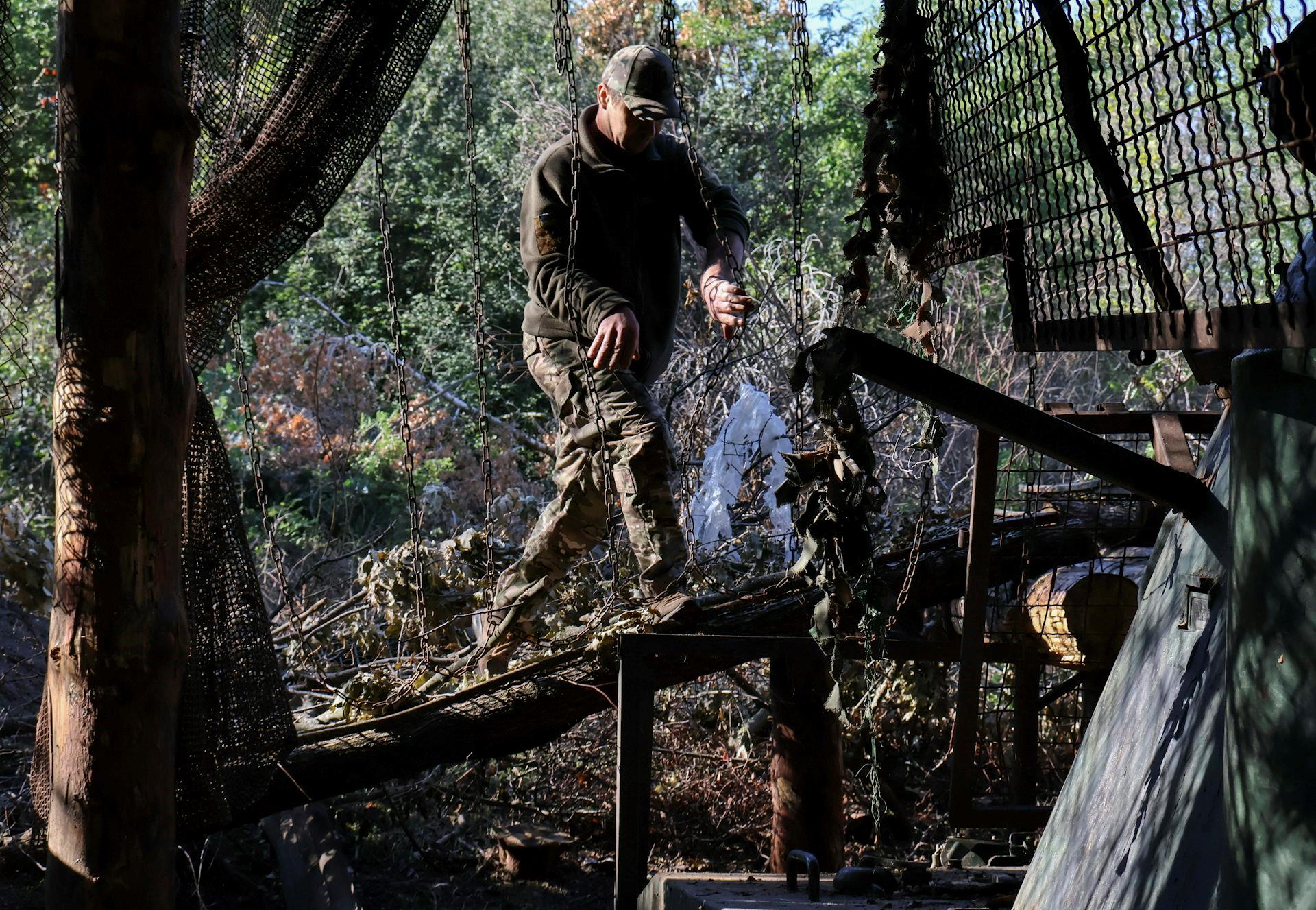
Why Ukraine Should Avoid Copying Finland's 1944 Path To Peace With Moscow
It was at a meeting with Donald Trump and several European leaders at the White House in August that Stubb invoked Finland's wars with the Soviet Union – the winter war (1939–40) and the continuation war (1941–44) – as a source of hope for Ukraine . His message was clear: even in the darkest times, peace and independence are possible.
In 1944, Finland entered into an armistice agreement with Joseph Stalin's Soviet Union that ended hostilities. But it came at a heavy price. Finland retained its formal independence, but had to make significant territorial concessions, including the loss of Karelia and Petsamo provinces. It also accepted severe restrictions on its sovereignty.
Stubb was seemingly looking to inspire Ukraine by showing that survival and statehood are achievable, even under immense pressure, and that a durable and lasting peace is possible to establish. However, while the sentiment is understandable, the comparison between Finland's situation in 1944 and Ukraine's current war with Russia is problematic and possibly misleading.

Ukrainian servicemen holding a position in the Zaporizhzhia region of south-eastern Ukraine. Ukraine's 65th Mechanized Brigade Press Service Handout / EPA
First of all, to suggest that Ukraine should accept territorial losses as part of a peace deal risks legitimising Russia's military aggression and undermines the principles of international law and national sovereignty. It would send a dangerous signal that borders can be redrawn by force, which could embolden future aggressors including Russia.
It also needs to be recalled that the geopolitical context was vastly different in 1944. Finland's wartime co-belligerent status with Nazi Germany during the continuation war wrecks the analogy. Finland joined forces with Germany to reclaim territory lost to the Soviet Union in the winter war and, initially, Finnish troops advanced deep into Soviet territory.
Ukraine's situation is fundamentally different. Its limited and essentially defensive military incursions into the Russian Kursk region cannot be compared to Finland's initial and extensive wartime conquests.
Moreover, drawing parallels between Finland's tacit alliance with Nazi Germany and Ukraine's current western support only risks feeding Russian propaganda. Moscow has long tried to portray Ukraine's government as neo-Nazi, supported by like-minded instigators in the west.
This has allowed the Kremlin to depict Russia's so-called special military operation as a continuation of the second world war. Even an indirect comparison between Finland then and Ukraine now could reinforce these false narratives.
Prosecuting wartime leadersUnder the 1944 armistice agreement, Finland was also required to prosecute its leaders deemed responsible for the war effort against the Soviet Union. The then-Finnish president, Risto Ryti, was sentenced to ten years in prison while several other ministers were imprisoned for shorter periods of time.
To even imply that Ukraine should demote and prosecute its president, Volodymyr Zelensky, and his government as part of a peace settlement would be morally outrageous and politically disastrous. Such a suggestion would meet hostile Russian demands, undermine Ukraine's democratic legitimacy and mock its sovereignty.
The issue of reparations highlights the problematic analogy even more. Finland was forced to pay heavy reparations to the Soviet Union as part of the 1944 agreement, equivalent to US$5.3 billion (£3.9 billion) in 2025. These reparations were paid over a period of eight years, mainly in the form of industrial products.
In Ukraine's case, the roles need to be reversed. Russia should be held accountable for its unprovoked invasion and the death and destruction it has caused. Russian reparations must therefore be part of any future peace agreement, along with justice for war crimes. These include the forced abduction of an estimated 20,000 Ukrainian children who are now held in Russian territory.
Finally, the long-term consequences of Finland's 1944 agreement included decades of Soviet influence over its domestic and foreign policy. A Soviet control commission operated in the Finnish capital, Helsinki, from 1944 to 1947. This effectively undermined Finnish sovereignty.
The control commission oversaw the prosecution of Finnish wartime leaders and the banning of political parties and organisations deemed undesirable by Moscow. It also essentially took control of Helsinki's international airport. Ukraine must be spared a similar fate. Any peace deal must ensure Ukraine's full independence and freedom from future Russian interference.
Risto Ryti, who served as Finland's president from 1940 to 1944, was imprisoned for crimes related to the Continuation war. Commons
Historical analogies can be powerful, but they must be used with care. Stubb's remarks were likely made with the best of intentions. He probably also meant to suggest that Finland has a unique understanding of what it means to fight for independence against its powerful neighbour, whether it be called Russia or the Soviet Union.
However, the use of Finland's 1944 armistice as a model for Ukraine risks sending a harmful message. Ukraine's struggle is not just about survival, it is about justice, sovereignty and the rejection of imperial aggression. The country deserves a future free from occupation and coercion, and all western democracies need to support it to attain this.

Legal Disclaimer:
MENAFN provides the
information “as is” without warranty of any kind. We do not accept
any responsibility or liability for the accuracy, content, images,
videos, licenses, completeness, legality, or reliability of the information
contained in this article. If you have any complaints or copyright
issues related to this article, kindly contact the provider above.


















Comments
No comment